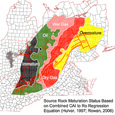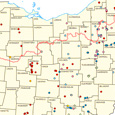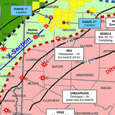Let’s put knowledge to work: Support land-grant mission
Thursday, March 3, 2011
I write this from Washington, D.C. where I am drowning in a sea of acronyms. Twenty-four pages worth, to be exact.
I am one of Ohio’s three APLU (Association of Public and Land-Grant Universities) CARET (Council for Agricultural Research, Extension and Teaching) delegates here for an annual meeting.
In our conference packet was a sheaf of 24 pages that lists the alphabet soup of acronyms that makes up our little world.
I thought I knew them all: USDA, ARS, NRCS, FSA, WIC, GAO, NSF, EPA. But, no, we’re just getting started.
Break down any agency, any institution and you’ll find they can’t exist without stringing three or four or five or six letters together to make an acronym.
But behind the acronyms clouding my vision on this trip is a very real mission: advancing the agricultural research, teaching and Extension outreach that has propelled significant strides in U.S. economic, social and agricultural development.
Teaching, research and outreach are the core of the land-grant university system, which has at least one institution in every U.S. state and territory. Obviously, other universities do research and, obviously, other universities do teaching, but nowhere is the outreach — the transfer of knowledge to the nonuniversity public — part of a mandate, as it is in the land-grant system.
The Purdues, the A&Ms, the Pennsylvania, Ohio and Michigan states of the world play a unique role. There is a camp, however, that says that unique role is a dinosaur, that the Extension outreach arm has lost its relevance or that ag research information is more timely from the private sector.
But nowhere else is the investment being made that addresses the various public and agricultural needs. I can guarantee you, for example, that no entity other than a land-grant university would be providing the breadth and depth of information about Marcellus Shale gas exploration and related economic, environmental and health impacts like Penn State has.
No one would be providing unbiased production research on such specialty crops as grapes or green peppers.
The returns on investments in public research and Extension are huge — research returns of between 40 and 60 percent, and Extension returns ranging between 23 and 35 percent.
And in Ohio alone, the Ohio Agricultural Research and Development Center generates more than $1 billion in annual economic impact and cost savings to the state and nation.
And land-grant research is constantly challenged to discover new economic paths — value-added agriculture, renewable energy, biobased products — illustrating the land-grant vision of “knowledge that works.”
I would argue that in today’s global, economic climate, the mission of education, research and outreach is critical to job creation, economic development, food security, food production and food safety.
The land-grant system is critical to human health and nutrition, water quality, natural resource conservation.
We are in an atmosphere of questioning spending, taxes and finding ways for all levels of government to live within its means. Cutting investments in agricultural R&D, innovation and education is like eating your seed corn — and next year you’ll go hungry.




